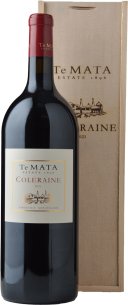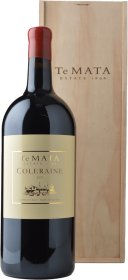Chateau Quintus Grand Cru St-Emilion
CARRUADES DE LAFITE Second wine of Chateau Lafite
Chateau Calon-Segur 3me cru classe
With its name enclosed in a heart on the label, Chateau Calon-Ségur is a third-growth estate (3ème Cru Classé) in Saint-Estèphe. Firm and sturdy in style, Chateau Calon-Ségur is somewhat austere in its youth, possessing a prominent tannin structure that rewards extended cellaring over 10 to 20 years.
Château Pape Clement
Planted in 1300, the estate is the oldest planted vineyard in the Pessac-Léognan appellation, ranked among the Premiers Crus for red wine in the Classification of Graves wine of 1959.
Chateau La Conseillante
Houghton Jack Mann Cabernet Sauvignon
One word - legend. Jack Mann served Houghton for a remarkable 51 consecutive vintages. His determination to create wines of intensity, elegance and regional character have inspired a generation of Australian winemakers to achieve great things. Simply one of this country's greatest Cabernets, this wine is not just single vineyard fruit, the selection process is so rigorous that often it is just a few rows from the Justin Vineyard. Such is the reverence for that great man - Jack Mann.
Chateau Ducru-Beaucaillou 2me cru classe
Taking its name from its uniquely rocky terroir (beau caillou translates as beautiful stones), and Bertrand Ducru who purchased the estate in 1795, what we know today as Chateau Ducru Beaucaillou as a wine producing estate, has history stretches back to the 13th century. Owned today by The Borie family (who have long-standing roots of their own in Bordeaux), the Chateau is, according to many, producing the best wines in their history at this very moment. The 2016 vintage has already been hailed as yet another monumental success for the winery with Antonio Galloni praising it as simply magnificent.
Te Mata Estate Coleraine Cabernet Sauvignon Merlot Cabernet Franc
TE MATA ESTATE Coleraine. Cepage may include Cabernet Sauvignon, Merlot, and Cabernet Franc. Hawkes Bay, New Zealand
Jim Barry The Benbournie Cabernet Sauvignon
This is the flagship Cabernet of the Jim Barry stable. Ripe black fruits combined with a beautifully distinct earth, leather aromas with hints of dried fruits and sweet mulch.
Chateau Montrose 2me cru classe
Chateau Montrose is a second Grand Cru Classé estate in St-Estephe and is considered one of the leading wine properties of the appellation. Located in the eastern half of the appellation just 800 metres from the Gironde estuary, the propertys proximity to the water provides a unique micro-climate that protects the vines from frost. The Grand Vin is a blend of Cabernet Sauvignon, Merlot and Cabernet Franc, that appears very powerful and austere in its youth, with a backbone of firm tannins that provides exceptional longevity.





















